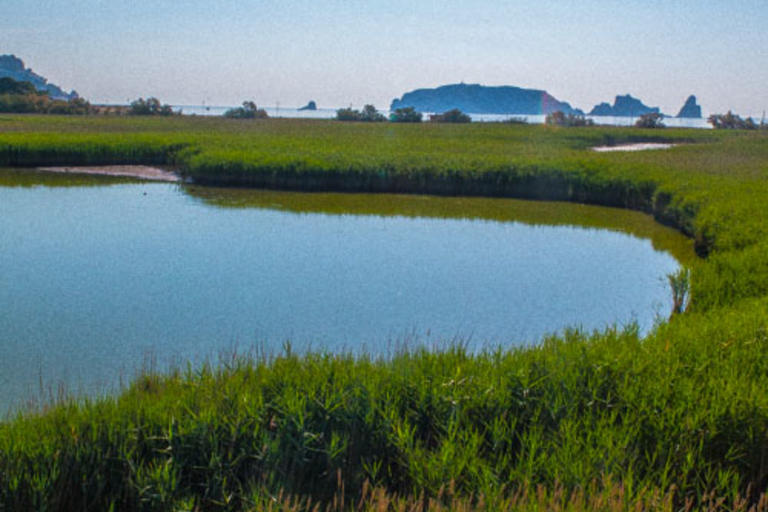
Introduction
Before you is the old mouth of the river Ter. During the first half of the nineteenth century, after a series of proposals, the river was redirected, moving the point where it flows into the sea a few kilometres to the south. This is a wet area comprising a number of marshes and fresh water lagoons fed by irrigation run-ff from the adjacent agricultural plain and by rain water. Areas of open water occupy less space year on year, as the reedbed takes over all of the lagoon.
The vegetation in these basins which have formed in old river beds is dominated by reedbeds, which form a border around the lakes. The most characteristic plants are the common reed, the cattail, the lakeshore bulrush and the yellow iris.
These locations are ideal for amphibians, such as the Iberian green frog, the common parsley frog, the Iberian spadefoot toad and the palmate newt. The most common reptiles include the grass snake.
During their migration, you can see several species of ducks such as the widgeon, shovelor, gadwall, garganey, pintail and the mallard, which is more common and has a stable year-round population.